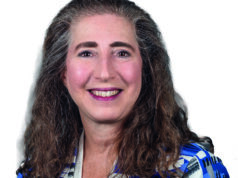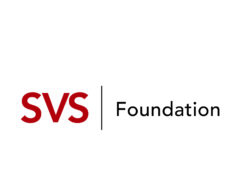
Vincent Rowe, MD, and Raghu Motaganahalli, MD, delivered Presidential Addresses at the Western Vascular Society (WVS) and the Midwestern Vascular Surgical Society (MVSS) that spelled out ways in which vascular surgery can advance—and thrive.
Rowe has been on the regional vascular meeting circuit this fall delivering invited guest lectures that drill down on the need to focus on the social determinants of health in order to tackle enduring disparities of vascular outcomes, not least of which in the area of peripheral arterial disease (PAD) and amputation, a personal area of professional focus. He spoke before both the MVSS and the New England Society for Vascular Surgery (NESVS) on the topic during September and October, and it also formed a portion of his WVS Presidential Address in Victoria, Canada, as he brought his 2021–22 term as president to a close at the 2022 WVS annual meeting (Sept. 17–20). In all three lectures, Rowe drew on an up-close example of how the artificial lines that bound the sorts of communities impacted by disparities can play out.
“This is the zip we live in, and this is the zip code just below us,” he said of his home in Los Angeles, gesturing toward a slide in which he showed maps of the two zones and how the pair of areas neatly fit together. The street on which he lives, Rowe pointed out, marks the boundary between the two zip codes. “All of sudden,” he said, referring to a recent inquiry he made into home values in the area, he realized a disheveled-appearing property across the street was worth about $100–150 per square foot more than his own.
“I’m like, ‘Come on, this guy’s house is a dump compared to ours.’ But it doesn’t matter. He’s in the zip code that matters. The school district is different, income level is different, because that zip code goes in a different direction. So I think we have to be careful, because we can’t just categorize it just on zip code. Hopefully we can start to get more data from our patients, and we’ll have those self-reported determinants to be able to understand. They’ll tell us their educational level, they’ll tell us their mean income, and then we can start to understand better how that all impacts our health.”
Pushing the envelope, Rowe raised targeted screening for PAD as a way to get out ahead of eventual treatment like amputation in order to catch communities vulnerable to disparate outcomes at the prevention stage.
Over in Grand Rapids, Michigan, at the MVSS annual meeting (Sept. 15–17), meanwhile, the day after Rowe gave a visiting lecture on disparities in vascular disease management at the Midwestern meeting, MVSS President Raghu Motaganahalli focused his own Presidential Address on the rich fabric of vascular surgery and the contributions made by international medical graduates (IMGs)—a population from which he hails—to vascular surgery practice.
The vascular chief from Indiana University School of Medicine compared the vascular profession to an intricate silk rug from Persia, saying that, like these carpets, “we are knitted” by the many individuals who make up the specialty, each coming in different shapes and forms, and with different beliefs, “but, at the end of the day, our profession is far more rich by having those individuals.”
Motaganahalli cast the position of IMGs and the hurdles they must negotiate in the U.S. healthcare system against the specter of the coming physician—and vascular surgeon—shortages facing the country. “We are only about 4,000 individuals in a population of about 400 million, and our profession doesn’t have much of a leeway, much of a flexibility, to lose individuals,” he told MVSS 2022. “Our profession is clearly at a crossroads when we either accept that portions of our care are relegated to the other professions or specialists, or improve upon our workforce.”
According to American College of Surgeons (ACS) data, observed Motaganahalli, there are about 2,800 IMG surgeons operating in the U.S. Vascular surgery’s share of that number equates to 7%, he said. Of the 4,000 vascular surgeons in the U.S., just 15% are women—”are we happy about this?” Motaganahalli continued. “Each vascular surgeon caters to about 80,000 patients, which underscores the value of each one of you. Compared to several other specialties, this is a profession that caters to a very large volume of patients.”
While placing a lens over the contributions made by IMGs, Motaganahalli also zeroed in on the position of women vascular surgeons. “I’d like to use this forum to recognize the need to recruit more women into our specialty. As I showed you, 15% of our current workforce are women, but the current trends are increasing, telling us one third of our future workforce will be women. While that is a promising sign, our work is not done yet.”
In the same vein, he raised the importance of recognizing IMGs and “their value to enhance the diversity of our profession,” explaining, “Currently, 17% of our vascular surgery workforce is comprised of international medical graduates.”
The IMG application pipeline is stagnant, with about 14% of current trainees hailing from that demographic, he said. “Clearly, in a timeline where we have a shortage of manpower, I think we need to come up with a better system, or better existing mechanism for us to create some novel pathways to help address the physician shortage.”
From an entirely different angle, Rowe suggested a novel approach to tackle the vascular workforce pipeline problem—and potentially diversify the field. Invoking the example of a kid who parlayed a passion for Gran Turismo on the PlayStation into a career as a racing car driver, he raised the potential of a mobile surgical simulation suite to raise the stakes in sparking interest in vascular surgery. “Why don’t we do something? Why don’t we get this big truck? Say it’s our pipeline to surgery,” Rowe said, showing a slide of a refrigerated semi-trailer. “Why don’t we outfit it—put in a laparoscopic station, put a suturing station, put a robotics station back there? Industry can afford it. They’ll put an endovascular station back there. Then we’ll take this big truck, and we park it wherever we want to.”
The tackling of both the social determinants of vascular health—the focus of Rowe’s address—and the workforce pipeline issues, to which both Rowe and Motaganahalli referred, find common ground in what the outgoing MVSS president called “the diversity bonus,” from a eponymous book by Scott E. Page. “If we truly want to be viable as a professional organization, as a profession itself, we have the duty to protect and strengthen the fabric of our profession,” Motaganahlli implored. “Different kinds of thinkers outperform homogeneous groups on complex tasks,” he said. “You need to have a diverse group of people addressing these tasks so as to have what we call diversity bonuses.”
At the close of his WVS 2022 address, Rowe asked, “Can we improve our vascular team?,” before answering, “I think we can, we have to do it; the time is now, and I think together we can celebrate as a group.”












